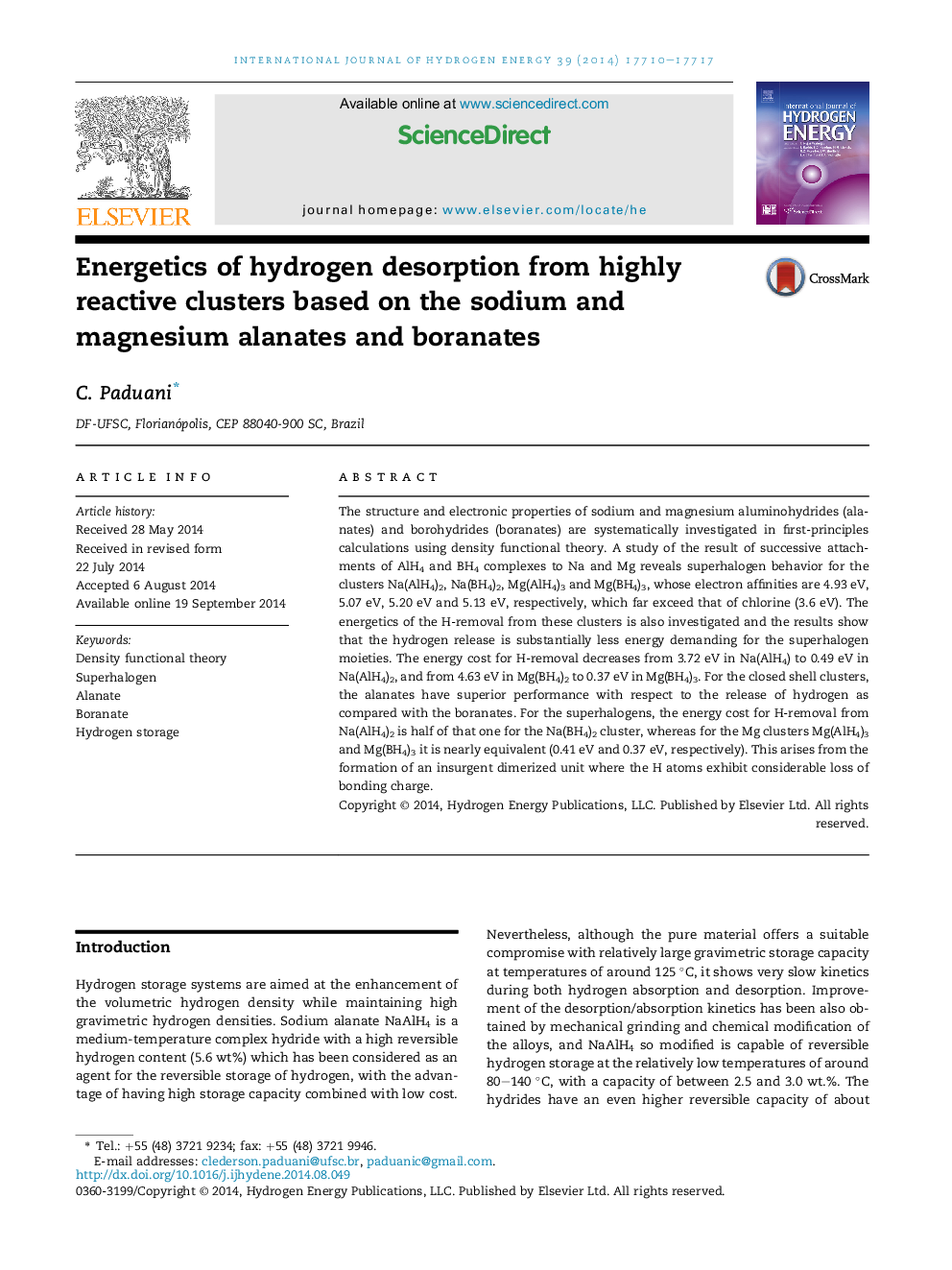| Article ID | Journal | Published Year | Pages | File Type |
|---|---|---|---|---|
| 1271867 | International Journal of Hydrogen Energy | 2014 | 8 Pages |
•DFT calculations reveals superhalogen behavior for Na and Mg alanates.•Alanates have superior performance for hydrogen desorption.•The H desorption from superhalogens is much less energy demanding.
The structure and electronic properties of sodium and magnesium aluminohydrides (alanates) and borohydrides (boranates) are systematically investigated in first-principles calculations using density functional theory. A study of the result of successive attachments of AlH4 and BH4 complexes to Na and Mg reveals superhalogen behavior for the clusters Na(AlH4)2, Na(BH4)2, Mg(AlH4)3 and Mg(BH4)3, whose electron affinities are 4.93 eV, 5.07 eV, 5.20 eV and 5.13 eV, respectively, which far exceed that of chlorine (3.6 eV). The energetics of the H-removal from these clusters is also investigated and the results show that the hydrogen release is substantially less energy demanding for the superhalogen moieties. The energy cost for H-removal decreases from 3.72 eV in Na(AlH4) to 0.49 eV in Na(AlH4)2, and from 4.63 eV in Mg(BH4)2 to 0.37 eV in Mg(BH4)3. For the closed shell clusters, the alanates have superior performance with respect to the release of hydrogen as compared with the boranates. For the superhalogens, the energy cost for H-removal from Na(AlH4)2 is half of that one for the Na(BH4)2 cluster, whereas for the Mg clusters Mg(AlH4)3 and Mg(BH4)3 it is nearly equivalent (0.41 eV and 0.37 eV, respectively). This arises from the formation of an insurgent dimerized unit where the H atoms exhibit considerable loss of bonding charge.
